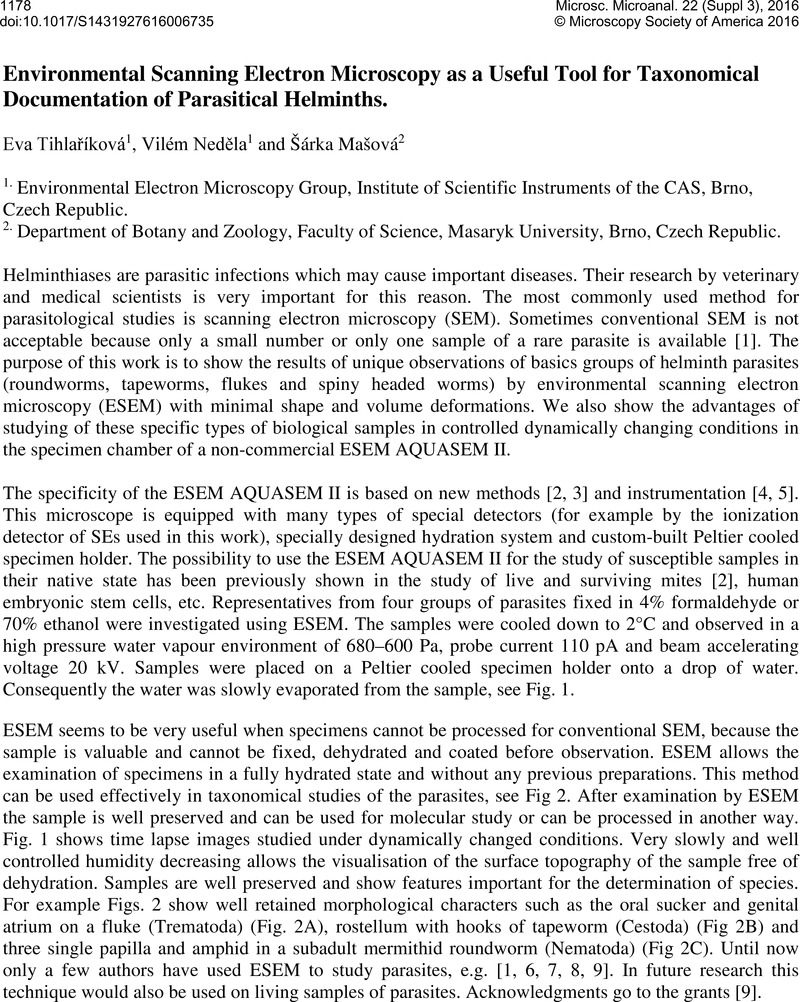No CrossRef data available.
Article contents
Environmental Scanning Electron Microscopy as a Useful Tool for Taxonomical Documentation of Parasitical Helminths.
Published online by Cambridge University Press: 25 July 2016
Abstract
An abstract is not available for this content so a preview has been provided. As you have access to this content, a full PDF is available via the ‘Save PDF’ action button.

- Type
- Abstract
- Information
- Microscopy and Microanalysis , Volume 22 , Supplement S3: Proceedings of Microscopy & Microanalysis 2016 , July 2016 , pp. 1178 - 1179
- Copyright
- © Microscopy Society of America 2016
References
References:
[9] The authors acknowledge funding from the Czech Science Foundation: grants Nos.GA14 22777S and P505/12/G112. The authors are grateful to the staff of the Antarctic expedition 2014 in the Czech Antarctic Station ''J. G. Mendel'' on James Ross Island for providing spiny headed worms.Google Scholar




